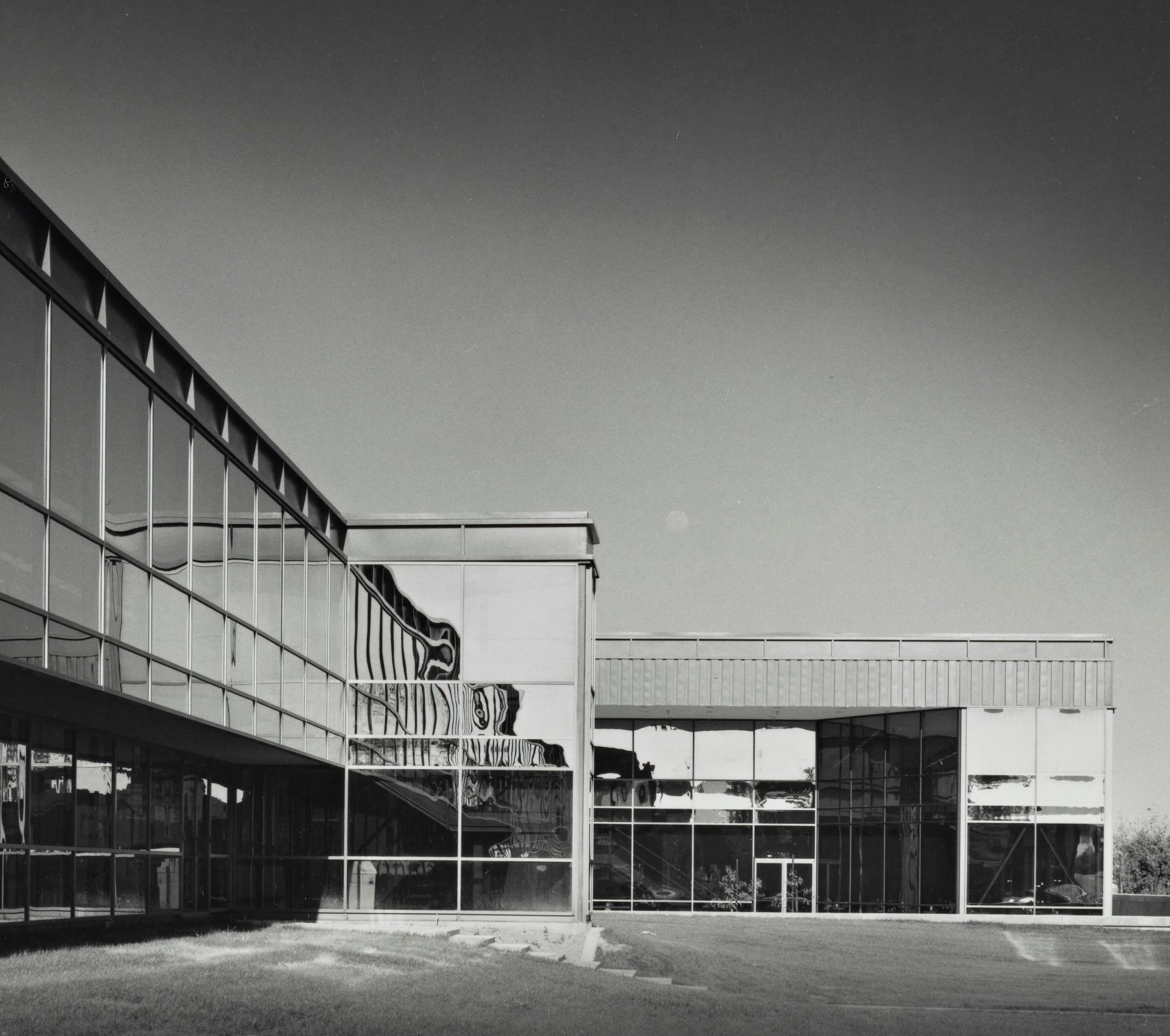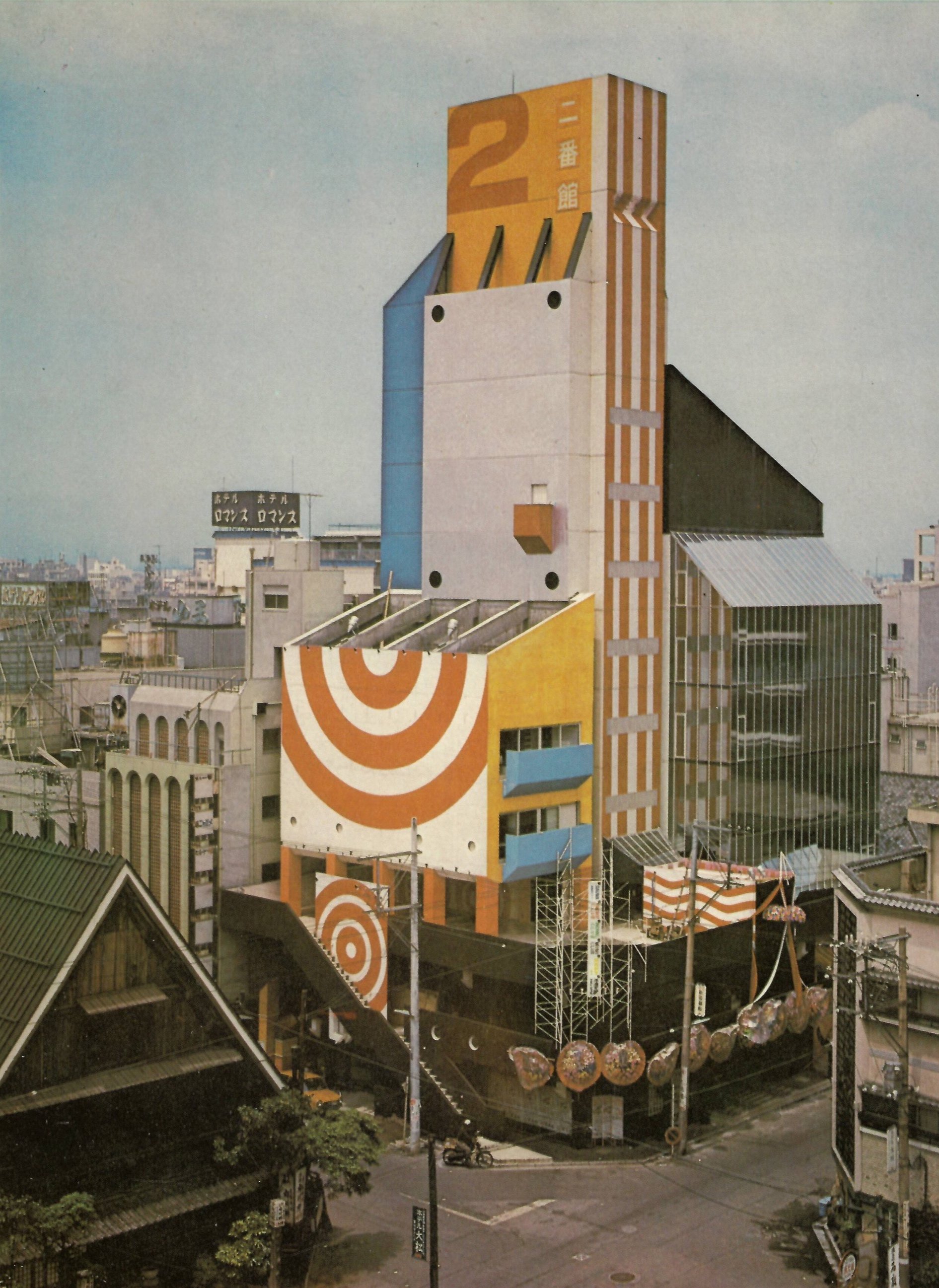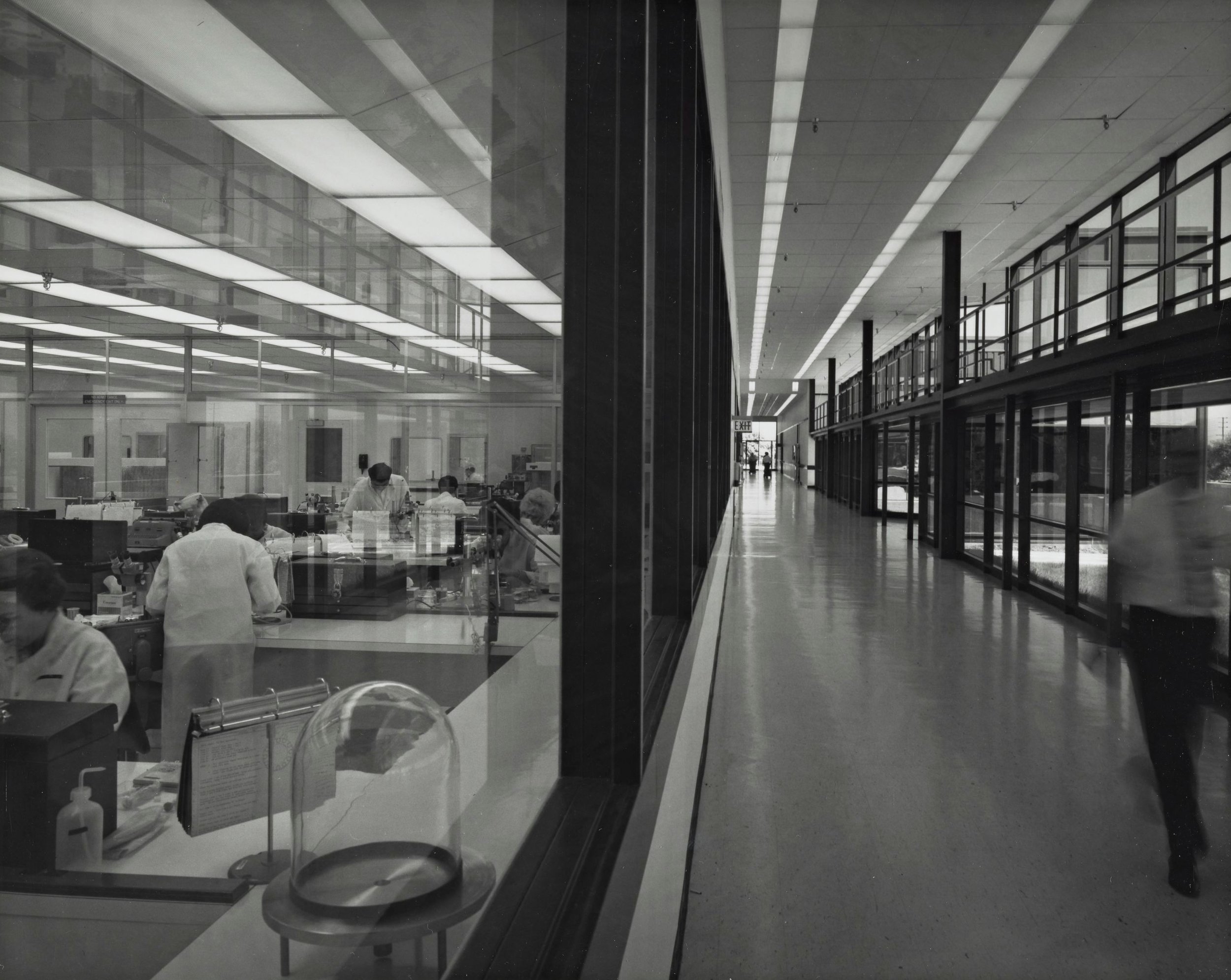“Aesthetics of Indeterminacy: The Architecture of Conglomerates,” Architectural Histories 11(1) (2023) doi: https://doi.org/10.16995/ah.8305
By the early 1970s, concern about the rise and prominence of large conglomerate corporations had fully saturated economic discourse in the United States. As products of a brief yet powerful merger mania during the 1960s, large industrial organizations began to restructure the economy by aggressively merging with and acquiring firms in disparate industries and geographies in order to obtain what business executives referred to as ‘geopolitical’ power. With hundreds of diverse subsidiaries, many of these military-sponsored conglomerates — from Union Carbide to Litton Industries to Teledyne — demanded new laboratories and office buildings that seemed to defy modernist tendencies of material standardization, reproducibility, and homogeneity, since the rates and directions of their future growth were indeterminable. The buildings produced for conglomerates between the 1960s and 1980s have been described by urban geographers and historians as the aesthetic and material epitomes of postmodernism, since they were often designed with highly reflective, hermetic surfaces that protruded, curved, and folded — simultaneously revealing and concealing the late capitalist logics that undergirded them. This article considers how conglomeration was viewed as a geopolitical act that challenges existing histories and theories of postmodernism, which reduce the aesthetic conditions of these buildings to abstract representations of late capitalist economics. Instead, the article draws on the laboratories designed by architects César Pelli and Anthony Lumsden for conglomerates during the late 1960s in order to reveal how these aesthetic conditions were responses to the particular geopolitical practices and structures of conglomerate business, including the imperialist acts of ‘acquiring’ people, land, and other businesses.
Click to download here or view online here.


